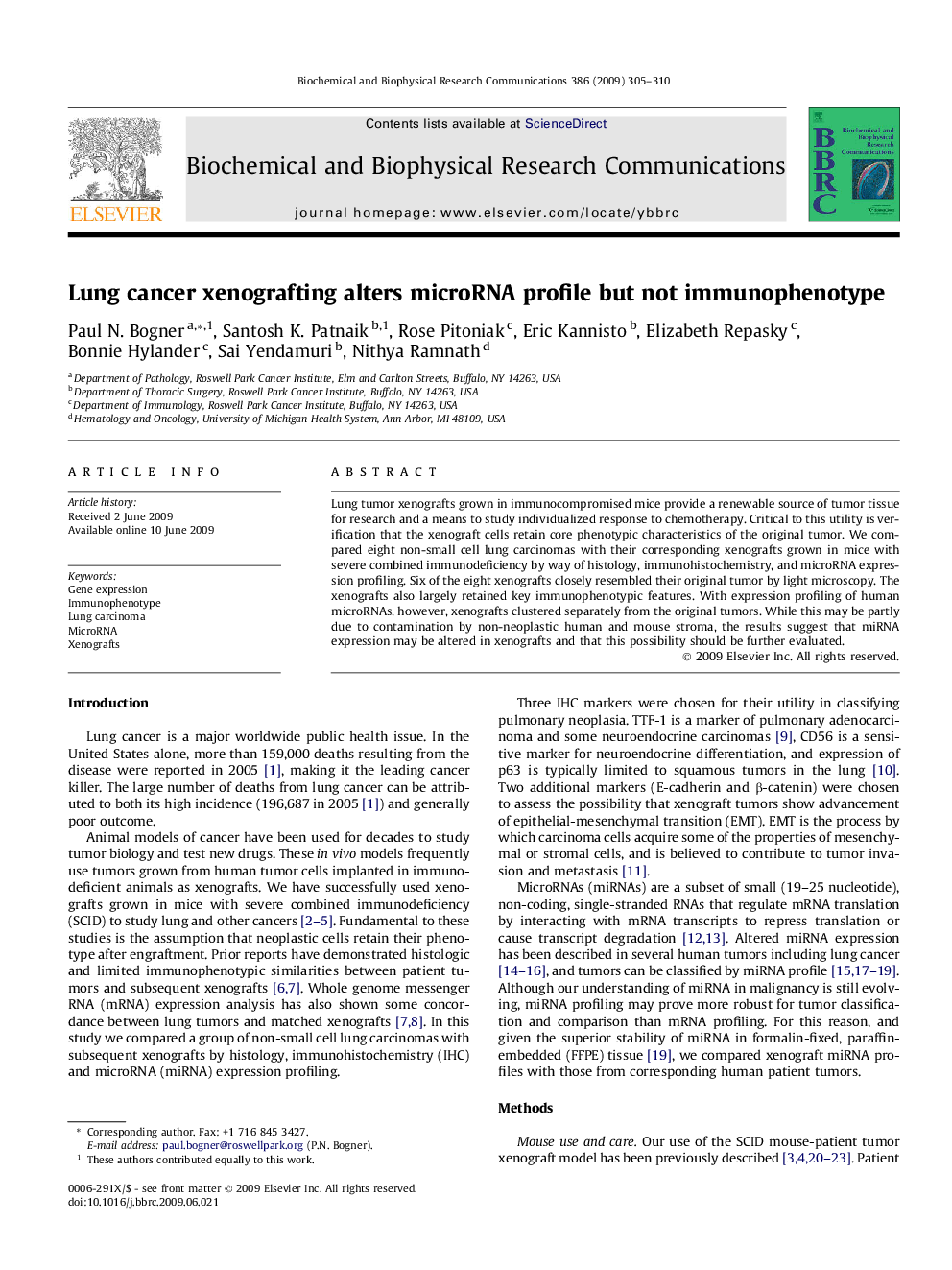| Article ID | Journal | Published Year | Pages | File Type |
|---|---|---|---|---|
| 1933336 | Biochemical and Biophysical Research Communications | 2009 | 6 Pages |
Lung tumor xenografts grown in immunocompromised mice provide a renewable source of tumor tissue for research and a means to study individualized response to chemotherapy. Critical to this utility is verification that the xenograft cells retain core phenotypic characteristics of the original tumor. We compared eight non-small cell lung carcinomas with their corresponding xenografts grown in mice with severe combined immunodeficiency by way of histology, immunohistochemistry, and microRNA expression profiling. Six of the eight xenografts closely resembled their original tumor by light microscopy. The xenografts also largely retained key immunophenotypic features. With expression profiling of human microRNAs, however, xenografts clustered separately from the original tumors. While this may be partly due to contamination by non-neoplastic human and mouse stroma, the results suggest that miRNA expression may be altered in xenografts and that this possibility should be further evaluated.
